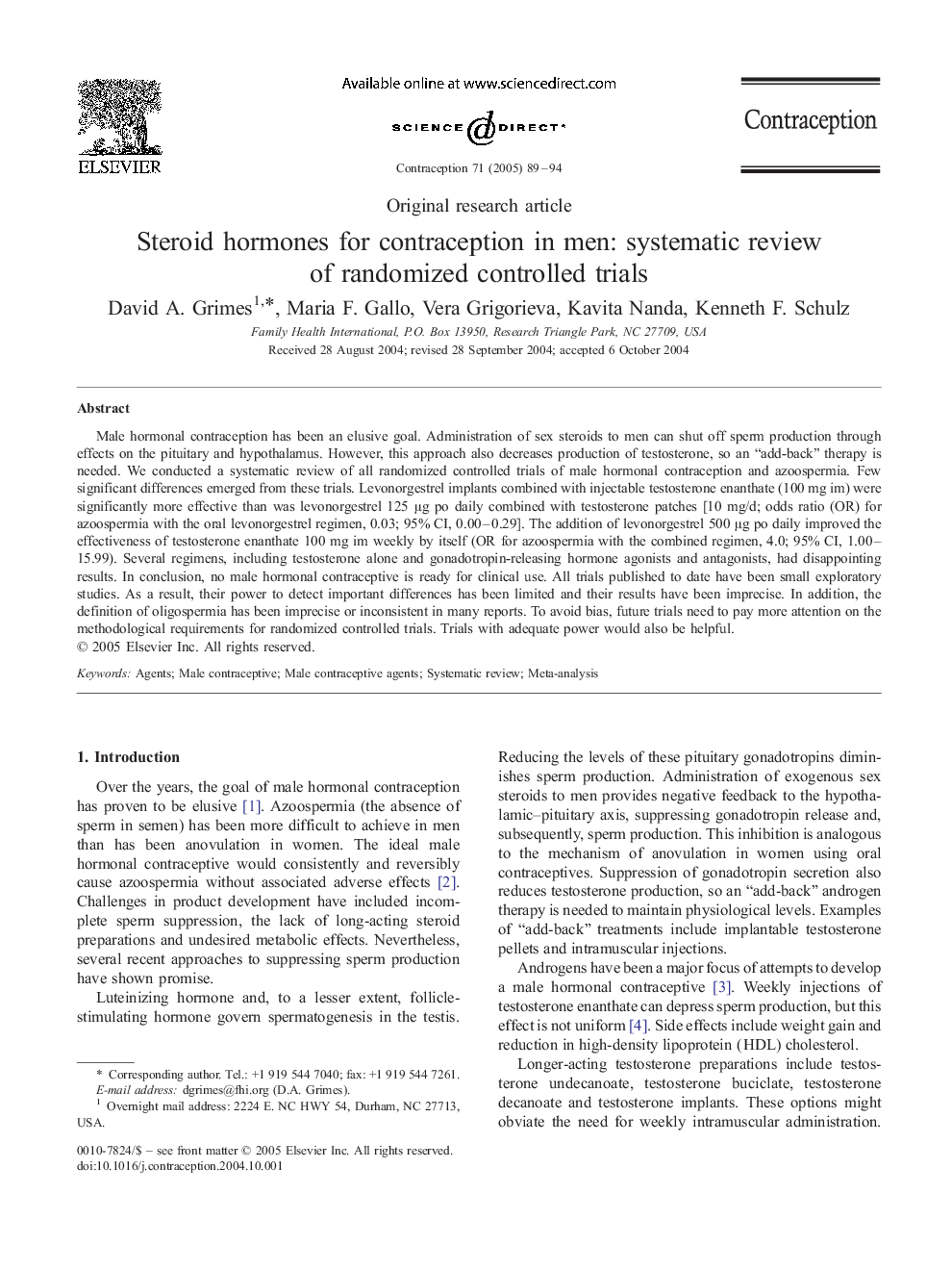| Article ID | Journal | Published Year | Pages | File Type |
|---|---|---|---|---|
| 9317548 | Contraception | 2005 | 6 Pages |
Abstract
Male hormonal contraception has been an elusive goal. Administration of sex steroids to men can shut off sperm production through effects on the pituitary and hypothalamus. However, this approach also decreases production of testosterone, so an “add-back” therapy is needed. We conducted a systematic review of all randomized controlled trials of male hormonal contraception and azoospermia. Few significant differences emerged from these trials. Levonorgestrel implants combined with injectable testosterone enanthate (100 mg im) were significantly more effective than was levonorgestrel 125 μg po daily combined with testosterone patches [10 mg/d; odds ratio (OR) for azoospermia with the oral levonorgestrel regimen, 0.03; 95% CI, 0.00-0.29]. The addition of levonorgestrel 500 μg po daily improved the effectiveness of testosterone enanthate 100 mg im weekly by itself (OR for azoospermia with the combined regimen, 4.0; 95% CI, 1.00-15.99). Several regimens, including testosterone alone and gonadotropin-releasing hormone agonists and antagonists, had disappointing results. In conclusion, no male hormonal contraceptive is ready for clinical use. All trials published to date have been small exploratory studies. As a result, their power to detect important differences has been limited and their results have been imprecise. In addition, the definition of oligospermia has been imprecise or inconsistent in many reports. To avoid bias, future trials need to pay more attention on the methodological requirements for randomized controlled trials. Trials with adequate power would also be helpful.
Related Topics
Health Sciences
Medicine and Dentistry
Obstetrics, Gynecology and Women's Health
Authors
David A. Grimes, Maria F. Gallo, Vera Grigorieva, Kavita Nanda, Kenneth F. Schulz,
